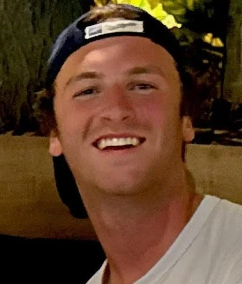
 May 15, 2015 To bring attention to one of the greatest crimes since the Holocaust,...
May 15, 2015 To bring attention to one of the greatest crimes since the Holocaust,...
May 15, 2015
To bring attention to one of the greatest crimes since the Holocaust, the United States Holocaust Memorial Museum is launching Cambodia 1975–1979, which examines the brutal policies and actions undertaken by the Khmer Rouge regime, leading to the deaths of nearly two million people. “I Want Justice!” explores the history of efforts to hold perpetrators of genocide and mass atrocities accountable through court proceedings, with a special focus on the ongoing trials in Cambodia of surviving Khmer Rouge leaders.
Both will be on view starting May 16 through October 2017. Admission is free; no passes are required.
“Forty years ago this spring, the Khmer Rouge launched a ruthless campaign of enslavement on its people, subjecting the people of Cambodia to forced labor, starvation, illness, and death,” says Museum curator Gregory Naranjo. “Many others were imprisoned and executed.
“Today, some of the perpetrators of these crimes are on trial. We want people to know the truth of what happened during the Khmer Rouge’s violent reign and to witness the long-delayed search for justice for the victims now.”
Following years of civil war, the fanatical Communist Khmer Rouge forces captured Cambodia’s capital, Phnom Penh, on April 17, 1975, and seized control of the government. Over the course of the next four years, the regime sought to radically restructure the nation, instituting policies that led to the deaths of at least a quarter of the country’s population.
Cambodia 1975–1979, located just outside the Museum’s Joseph and Rebecca Meyerhoff Theater, examines the murderous actions taken by the Khmer Rouge to establish their new state, “Democratic Kampuchea,” as a self-sustaining, farm-based society, free from outside influence. Within hours of Phnom Penh’s capture, the city’s two million residents were driven out and sent to the countryside, where they were quickly pressed into forced labor brigades on massive earthworks and rice paddies. Hundreds of thousands of Cambodians starved, dropped dead of exhaustion or disease, or were executed as punishment for failure to meet production goals or for suspicion of disloyalty to the regime.
Located in the Museum’s Wexner Center, “I Want Justice!” explores the history of efforts to hold perpetrators of mass atrocities and genocide accountable in courts of law, from the Nuremberg trials of Nazi leaders after World War II to the International Criminal Court today. In addition to the recent and ongoing cases before the Extraordinary Chambers in the Courts of Cambodia, “I Want Justice!” also looks at ways Cambodian survivors are seeking others forms of “justice”—personal, cultural, and historical—as they continue to struggle with the legacy of the Khmer Rouge era.
Visitors can learn more about this history and the victims’ search for justice at ushmm.org/cambodia.
“The Museum’s founders created a living memorial that aims not only to honor the victims of the Holocaust but also to prevent mass atrocities from happening again,” says Cameron Hudson, director of the Museum’s Simon-Skjodt Center for the Prevention of Genocide. “By shining a light on what happened in Cambodia and its long aftermath, we hope to both deepen our visitors’ understanding of this history and inspire them to work toward preventing such crimes in the future.”
Content from United States Holocaust Memorial Museum
Originally published at https://www.ushmm.org/information/press/press-releases/museum-opens-cambodia-1975-1979-and-i-want-justice
originally published at HUMAN RIGHTS - USA DAILY NEWS 24

